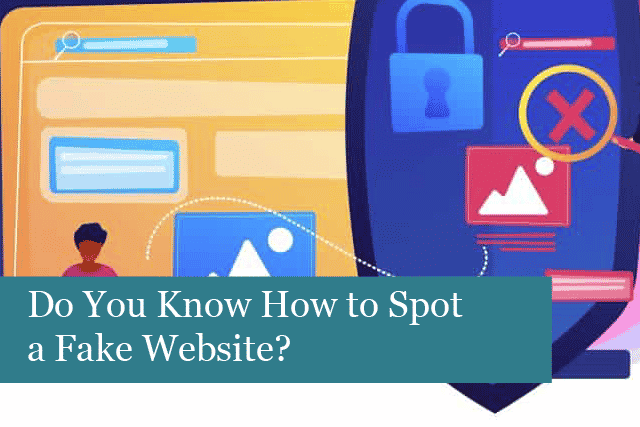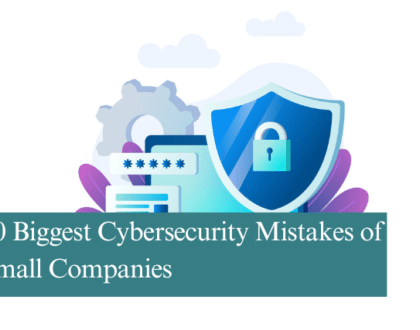
The Internet is growing by leaps and bounds, with new websites coming online every day. Can you guess how many websites are currently on the Internet? According to First Site Guide , in 2022, there are currently over 1.93 billion websites online. That’s a phenomenal number of websites!
Businesses around the world build websites to market their products and services. Some sites are created to help freelancers find work, allow customers to do their banking online, and more. Having a website means a business is no longer tied to one specific location. Instead, their reach extends to the world, with customers coming from many countries.
While websites are a wonderful way to do business, cybercriminals have also become savvy in creating fake websites. They’re out to scam people out of their money, private data, and more. But how can you tell if you’re on a fake website? Do you know the signs?
Spoof Websites
With the many advances in website development and design, it’s easier for cybercrooks to build a website that looks almost exactly like a major company’s website. These fake websites look professional and appear to be the website a person’s looking for. For instance, a banking customer may want to go to their bank’s official website. However, they accidentally end up on a spoof site that looks like their bank’s site. It’s very confusing.
Spoof websites may be built with malicious links, download malware, are able to steal your login information, and more. What’s even worse is that these fake sites are picked up and indexed by search engines. This can also make the site look more legitimate. This isn’t the fault of the search engine. They’re only searching for sites online and indexing these sites. This is how spoof sites make it into the search engine and show up in the search results.
But are there ways you can tell a site may be fake? Can you avoid falling prey to spoof websites?
Ways to Spot a Fake Website
Here are some ways you can avoid falling prey to a fake website!
- Check the Domain Name
The first thing to check is a site’s domain name (URL). The URL is the address that you use to reach the site. If the URL doesn’t seem correct and has a lot of strange characters, you’ve probably reached a fake website. In that case, do not visit the site. Close the browser and reopen it to get to the right site.
Watch for replaced or additional characters in the URL. For example, if you’re trying to buy something from Microsoft, avoid a site URL such as “micr0soft.com.” In addition, avoid sites that end in “.org” or “.net,” as these are rarely used by a professional business.
- Check the Spelling
You occasionally come across typos on a website, and that’s only to be expected. However, if you find many spelling and grammar errors, this could be a sign the site is fake. The site may have errors in punctuation, capitalisation, and more.
If the website feels off in some way with the wording, think twice before using the site. Listen to your gut instincts and shut that webpage to avoid being a victim of a fake or spoof website.
- Contact Details
Another sign that a website could be fake is a lack of contact details. Some spoof sites may look legitimate until you try to find their contact details.
Does the site offer the company’s phone, email, live chat, or a physical address? Does anyone answer the phone when you call the number listed on the site? What happens if you send an email?
If you receive a recorded voice message and a form email, be wary. This could be a fake website. And if the site only offers an email contact form, it’s best to stay away.
- Never Pay By Bank Transfer
If a website only takes payments by bank transfer, this could be a sign it’s a fake site.
When you make a purchase with a credit or debit card, you have some protection from the bank that provides that card. Even if the item or service is fake, you can get your money back.
However, if you pay by a bank transfer, there’s not much the bank can do to get your money back. You usually have no other recourse in this case.
So, never make a purchase that requires you to pay by bank transfer. Avoid these sites.
- SSL Certificate
When you visit a site for the first time, pay attention to the URL. Does it start with HTTP or HTTPS? When you see “https://www…” at the beginning of the URL, the “S” stands for secure. This means the site uses encryption to securely transfer data so hackers can’t gain access to it.
On the other hand, if you encounter a site that has “http://www…” without an “S,” this means the data you may share with the site is not encrypted. This can be a sign that the website is fake.
If you come across a website that has only “http://www,” avoid entering any personal information on the site. And do not make a purchase or payment.
In addition, a website may also display a padlock in the URL to show the site’s encrypted. That means your personal data should be safe on the site. However, scammers are able to fake or buy padlocks, so even if a site has one, it could be fake.
So, it’s essential to check the padlock and use the other checks we’re sharing in this article.
Summing It Up
As you can see, it can be easy for a scammer to create a professional website that looks authentic. It can be challenging to tell whether or not a website is fake.
However, if you use common sense and use the tips we’ve shared, you can feel empowered to check each website you use. You now have the information you need to stay safe when visiting websites all over the Internet. You have more control over your personal data and understand how to stay safe when visiting online sites.
Recommended Posts

10 Biggest Cybersecurity Mistakes of Small Companies
18th April 2025

The Importance of Planning in Business IT Solutions
11th April 2025

